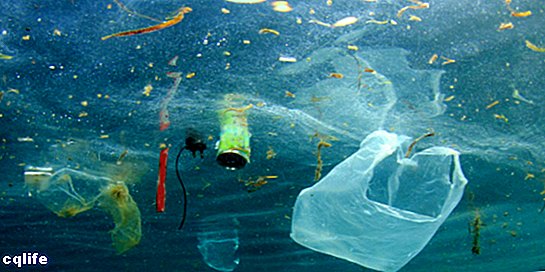- What is contamination?
- Types of pollution
- Causes of pollution
- Consequences of pollution
- Solutions to reduce pollution
We explain what pollution is and what types of pollution exist. In addition, causes, consequences and solutions to reduce it.
Pollution is usually the product of human activity.What is contamination?
Pollution is the introduction of a polluting agent, which can beliquid, solid orgaseous, in a natural environment. Due to their chemical characteristics, these agents or elements produce instability and damage the operation of theecosystem.
Thetypes of pollutants are varied and affect different media such as Water, the air or the I usually. Generally, pollution is the product of the activity of man who intervenes in thenature, although there are also natural processes that expel into the environment elements that generate an imbalance in the environment.
The main types of soil pollutants are:
- Not degradable. Elements that do not degrade withweather, generally, its degree of contamination is constant, which generates a great damage to theenvironment. For example: glass.
- Slow degradation. Elements that produce a high degree of concentrated contamination over an extended period and then decay. For example: DDT (dichloro diphenyl trichloroethane).
- Biodegradable. Elements that are capable of being decomposed naturally by the action of biological agents vegetables oranimals. For example: cardboard.
See also:Acid rain
Types of pollution
Depending on the area it affects, the contamination can be:
- Air pollution. It is the environmental pollution produced by various causes such as the burning of fossil fuels in the industrial sector.
- Water contamination. These are those polluting agents that affect rivers,seas and lakes. Generally, it is produced by the discharge of elements such as fertilizers, waste, garbage and fossil fuels. It can also be produced by natural processes such as the decomposition oforganic matter Yminerals.
- Soil contamination. It is about the presence of chemical substances pollutants that affect Earth crust and impede their natural development.
- Noise pollution. It is the presence of sound frequency levels that alter the conditions in which theliving beings of a natural area.
- Radioactive contamination. It is the pollution product of accidents or nuclear or mining activities. These elements can affect the soil, air or water courses.
- Thermal pollution. It is about the influence generated by residual substances that lead to an increase in thetemperature of a natural area.
- Visual contamination. It is about the irruption of visual elements in a scenery, which negatively impact the human eye.
Causes of pollution
When talking about pollution, a distinction must be made between waste produced in natural processes and waste produced by man.
Natural pollution is usually caused by: waste Volcanic eruptions, presence of toxic materials on rocks and soils, forest fires, among others.
The term "pollution" is used more frequently to refer to those polluting processes generated by man. The causes of this type of contamination vary according to the affected environment. They may be:
- Environmental pollution. Burning of fossil fuels in industries and transportation, use of chemicals on the ground amounting to the atmosphere, mining that produces harmful gases.
- Soil contamination. Indiscriminate use of fertilizers and pesticides, urban garbage, soil compaction, nuclear accidents.
- Water contamination. Dumping of urban or industrial waste, maritime traffic, deforestation, global warming.
- Noise pollution. Intrusion of vehicles, installation of large industries, trains and mass transportation.
- Visual contamination. Air traffic, wiring, antennas, garbage, advertising on public roads.
Consequences of pollution

Water pollution poses a great risk to all living beings.
Among the main consequences of pollution are:
- Damage to the health of living beings. Because they are exposed to more diseases and stress situations.
- Increase in global warming. Due to the polluting gases expelled into the atmosphere that produce the weakening of the ozone layer.
- Loss or imbalance in ecosystems. Due to the extinction or migration of species that see the ecosystem in which they inhabit deteriorated.
- Loss or decrease of natural resources. Due to the wear and tear of natural resources that are essential for the life on earth.
- Poisoning of the waters. Because water pollution poses a great risk to all living beings that cannot do without it.
- Soil erosion. Due to industries and mining and its excessive use of pesticides, fertilizers.
- Degradation of natural landscapes. Due to noise and visual pollution.
Solutions to reduce pollution
Reducing pollution levels is a commitment that must be assumed by all citizens, in conjunction with projects and standards that come from institutions Y governments.
There are certain habits that can be incorporated to reduce the levels of contamination of the soil, air, water and landscapes. Some are:
- Recycle packaging.
- Opt for reusable products or packaging.
- Do not dump garbage on public roads or in river courses.
- Reduce the use of polluting means of transport.
- Reduce the consumption of plastic.
- Reduce water consumption.
- Reforest.
- Use renewable energy.
- Reduce the use of aerosols.
- Avoid making annoying noises.
